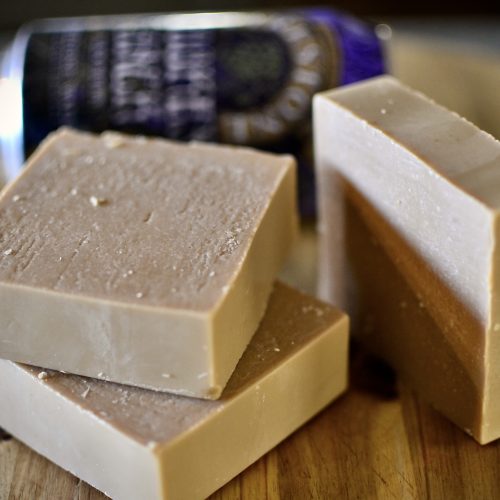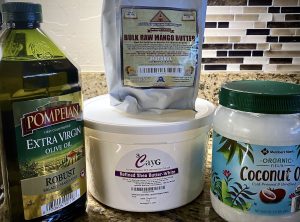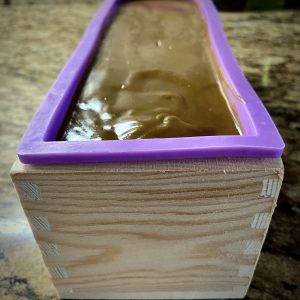
In my research I have found that a large number of soap bar users are asking one simple question, why is my bar of soap not lasting long? but I think the question we should all be asking is, how long do companies CURE their soaps before putting them on the shelfs? Short to this question answer is “Time”. Let me elaborate further.
Table of Contents
There are many variables that can make your bar of soap disappear quicker, water condition, soap storage, length of showers, etc. Some of them you have no control of. It stills begs the question, why doesn’t my bar of soap last very long?
Here is what Dr. Squatch says about their soaps:
“Our soaps last 2-3 weeks on average with daily use. The longevity differs between households based on a variety of factors — the amount of lather, the amount of body hair, the frequency of use, and the water type.”
It also outlines ways and methods you can try to extend the life of your soap. One of them being the Dr. Squatch Soap Saver or Soap Gripper. Whilst this is true, you can see how a company can benefit from this, right?
Artisan Shopper had this to say:
“In general, a 5 ounce bar of handmade soap will last between 3-4 weeks with daily use and with proper storage between uses. An average shower uses between 6 and 7 grams of bar soap, with variations based on personal use and water temperature. The life of handmade soap will also be affected by whether the bar is allowed to dry out between uses.”
If you are one of the millions who is experiencing this with your bar of soap, the solution is Time… And how does “Time” fit here, you ask? Let me explain.
If you are familiar with the soap-making process, then you know what happens to handcrafted soaps if you do not let it cure. If you are unfamiliar with the process, it goes down like this:
When oils come in contact with Lye treated water, a chemical reaction begins and the oils will transform into soap paste. This process is called Saponification.
The Saponification process will last between 24 to 48 hours, (it’s 93% of the soap curing time) after which the soap is safe to use. However, the other 3% will take roughly between 4 to 6 weeks to finish. During this time, the leftover Lye water evaporates from the soap leaving a more hardened and solid bar.
One of the side effects of not letting your soap cure for the entire 6 weeks is that your soap will disappear far quicker than usual.
For companies there is no money in waiting… and 6 weeks is way too long for a business to turn a profit.
In my opinion, companies will cure their soap for the 48 hours minimum as a safety precaution then put them on shelf as a “Young Soap” in hopes that they mature before someone buys it.
But while this is great for handmade soap bars that could sit on a shelf a bit longer, it will not work for a popular companies such as Dr. Squatch.
Conclusion
If your soap bars it’s only lasting 2 weeks or less, you should reach out to the business you are buying from and ask about their curing time. If you don’t like what you hear, maybe is time to find a vendor that will better fit your needs.
EXPERIMENT
We are conducting our own experiment using human technology. We will use beer for the Lye instead of water in this cold process Beer Soap Experiment.
When looking for what beer to use, we went no further than to one of our favorite brewery, Firestone Walker Brewing Co. and we used they latest rendition of Wookey Jack Black Rye IPA.
The dark complexity of the beer will give this soap a brown color that I’m looking for. We added Patchouli fragrance oil to give it a more attractive smell.
The goal of the experiment is to see how much of a difference will make if we use the soap in a week vs. leaving soap cure for 6 weeks. We also posted the recipe below.

Beer Soap Experiment
Equipment
- Long Sleeve Shirt,Long Pants, Closed Toes Shoes
- Eye Protection / Googles
- Gloves
- Stick Blender / Emulsifying Blender
- Heat Resistant Bowl and Spatula
Ingredients
- 8 oz Coconut Oil (24%)
- 7.5 oz Olive Oil (22%)
- 7.5 oz Sweet Almond Oil (22%)
- 5 oz Mango Butter (12.1%)
- 6 oz Refined Shea Butter (19.9%)
Lye Water
- 4.8 oz Lye
- 24 oz Firestone Walker Wookey Jack Rye IPA or favorite beer
Instructions
- THIS IS IMPORTANT STEPBoil the beer for 20 to 30 minutes or until beer is completely flat. No carbonation should be left in the beer. Once beer is flat, measure 11.2 oz on the boiled beer.
- Put beer in refrigerator overnight. This is to prevent sugars in the beer from scorching when adding the Lye.
- Slowly and carefully add 4.8 ounces of Lye to 11.2 ounces of boiled beer, NEVER THE OTHER WAY AROUND, and gently stir until the Lye has fully dissolved and the liquid is clear. Set aside to cool. Optional: Add 2 teaspoons of sodium lactate to help the bars harden more quickly.
- Melt and measure the coconut oil, olive oil, sweet almond oil, mango butter and shea butter into the large heat-safe container. Allow the Lye water and the oils to cool to 130° F or below (and ideally within 10 degrees of each other). For this recipe, both were around 120° F.
- Place your stick blender into the bowl. Gently tap it on the bottom several times to release any bubbles that got trapped by the stick blender head. This is called “burping."
- Once bubbles no longer rise to the surface, gently pour the lye water into the bowl.
- Turn on the stick blender and pulse several times. You'll immediately see the lye and oils come together and create a creamy yellow color. Alternate between pulsing the stick blender and using it to stir. After about 30 seconds, test for trace. Because this recipe contains a large amount of olive oil, it will stay thin longer than recipes with fast-moving oils.
- Add fragrance (optional) Keep pulsing and stirring with the stick blender.
- You may notice the soap starting to lighten in color. It will also get thicker. The soap should be thick enough to support the trailings on the surface and the consistency is slightly thinner than pudding. This is perfect for pouring.
- Pour the soap into the mold. Scrape the sides of the bowl so you get every last bit!
- Firmly tap the box on the counter to pop any air bubbles. Spray the top with 99% isopropyl alcohol to help prevent soda ash.Allow the soap to sit in the mold for 3-4 days. Unmold, cut into bars, and let them cure for 4-6 weeks. Cure the soap in a cool, dry place with plenty of airflow. That allows excess water to evaporate, which makes the bars firmer and last longer in the shower.
Notes
- Saponification: The chemical reaction that occurs when oil and lye molecules create new soap molecules.
- Trace: The point when oils and lye water emulsify and begin to thicken. Once the soap has reached thin trace, it will continue to thicken as it sits. Click here to learn more and to see examples of thin, medium, and thick trace.
- Emulsify: When the oils and lye solution mix and don't separate. The term emulsify and trace are often used interchangeably.
- Superfat: Any extra oil that's not turned into soap. Learn more in Superfatting Soap - An Explanation.
- Gel phase: "Gelling" or "gel phase" refers to when the soap gets warm and gelatinous – up to 180° F. Gel phase results in brighter colors and a shinier, more translucent appearance. Click here to learn more about gel phase.
- Soda ash: When unsaponified lye reacts with naturally-occurring carbon dioxide in the air and creates a white ashy film on the bars. It only affects the way the soap looks, not the quality. Learn more in Explaining and Preventing Soda Ash.







